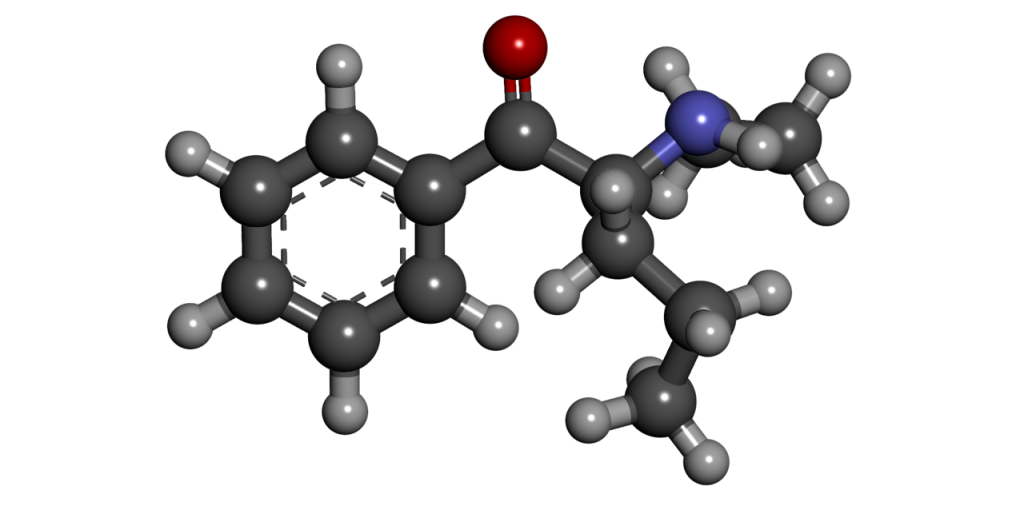Contents
Summary
N-Ethylpentedrone, also referred to as α-ethylaminopentiophenone, α-EAPP, α-ethylaminovalerophenone, N-ethylnorpentedrone, and NEP, belongs to the substituted cathinone class of chemical compounds. Since the mid-2010s, NEP has been available online as a designer drug. Notably, it represents the N-ethyl counterpart of pentedrone.
| Identifiers | |
|---|---|
| IUPAC name | |
| CAS Number | 779974-89-9 18268-16-1 (HCl) |
|---|---|
| PubChem CID | 205592 |
| ChemSpider | 178126 |
| UNII | B483GRH93Q |
| Chemical and physical data | |
| Formula | C13H19NO |
| Molar mass | 205.301 g·mol−1 |

Legal status
In Japan and China, NEP is considered illegal, while it falls under the classification of a “potentially harmful substance” in Sweden, making it a controlled substance but not entirely banned.

FAQ
1. What is N-Ethylpentedrone (NEP)?
N-Ethylpentedrone, often abbreviated as NEP, is a chemical compound classified within the substituted cathinone class. Various names know it, including α-ethylaminopentiophenone, α-EAPP, α-ethylaminovalerophenone, and N-ethylnorpentedrone. NEP is a designer drug that emerged in the mid-2010s and is structurally related to pentedrone.
2. How is NEP Used?
NEP is primarily used for its stimulant properties. Various routes, including oral ingestion, snorting, or vaping, consume it. Users often seek its stimulating and euphoric effects, but it may also have side effects and risks.
3. Is NEP Legal?
The legal status of NEP varies by country. It is illegal in Japan and China. In Sweden, it is classified as a “potentially harmful substance,” which means it is controlled but not completely banned. Legal status can change, so it’s essential to check local regulations.
4. What are the Effects of NEP?
NEP is primarily known for its stimulating effects, including increased alertness, energy, and euphoria. It may also enhance sociability and concentration. However, like many stimulants, it can lead to adverse effects such as insomnia, anxiety, and elevated heart rate.
5. Is NEP Safe to Use?
The safety of NEP has not been thoroughly researched, and its long-term effects are not well understood. Like other cathinones, NEP may carry risks, including addiction potential, cardiovascular issues, and mental health concerns. It should be used with caution, if at all, and only under the guidance of a medical professional.
6. Can NEP Be Detected in Drug Tests?
NEP may not be detected in standard drug tests. However, specialized tests can identify its presence in urine or blood samples. Awareness of the specific substances screened for in any drug test is crucial.
7. Is NEP Addictive?
While research on NEP addiction is limited, cathinones, in general, have the potential for addiction due to their stimulant properties. Regular use can lead to tolerance and dependence. If you or someone you know is struggling with substance abuse, seek professional help.
References
- Anvisa, the Brazilian health regulatory agency, issued Collegiate Board Resolution No. 804 in July 2023, which lists substances under special control, including narcotics, psychotropics, and precursors. This resolution aims to regulate and monitor such substances within the country.
- In Sweden, the Public Health Authority (Folkhälsomyndigheten) announced in June 2016 that 31 new substances could be classified as drugs or health hazardous products. This decision reflects ongoing efforts to control and manage potentially harmful substances in the country.
- The Swedish Government maintains an official list of narcotics, providing a reference for controlled substances within the country. This list is periodically updated to reflect changes in regulations and newly identified substances.
- Matsuta and colleagues conducted structural characterization of cathinone-type designer drugs using electron impact mass spectrometry. This research contributes to the identification and understanding of these substances, aiding in their detection and control.
- The New Synthetic Drugs Database includes information about various synthetic substances, including 2-(Ethylamino)-1-phenylpentan-1-one. This database serves as a resource for tracking and monitoring emerging designer drugs.
- Pieprzyca, Skowronek, and Czekaj conducted toxicological analysis of cases involving mixed poisonings with synthetic cathinones and other drugs of abuse. Their research helps shed light on the health risks associated with these substances.
- The Ministry of Health, Labour, and Welfare in Japan maintains a list of designated drugs (指定薬物一覧) to regulate and control specific substances. This list is a reference for authorities and healthcare professionals in the country.
- The efforts of the Public Health Authority (Folkhälsomyndigheten) in Sweden to classify new substances as drugs or health hazardous products demonstrate the ongoing commitment to public health and safety in managing emerging challenges related to substance use.
- The official list of narcotics maintained by the Swedish Government (Rättsmedicinalverket) provides essential information for legal and regulatory purposes, contributing to the control and management of controlled substances.